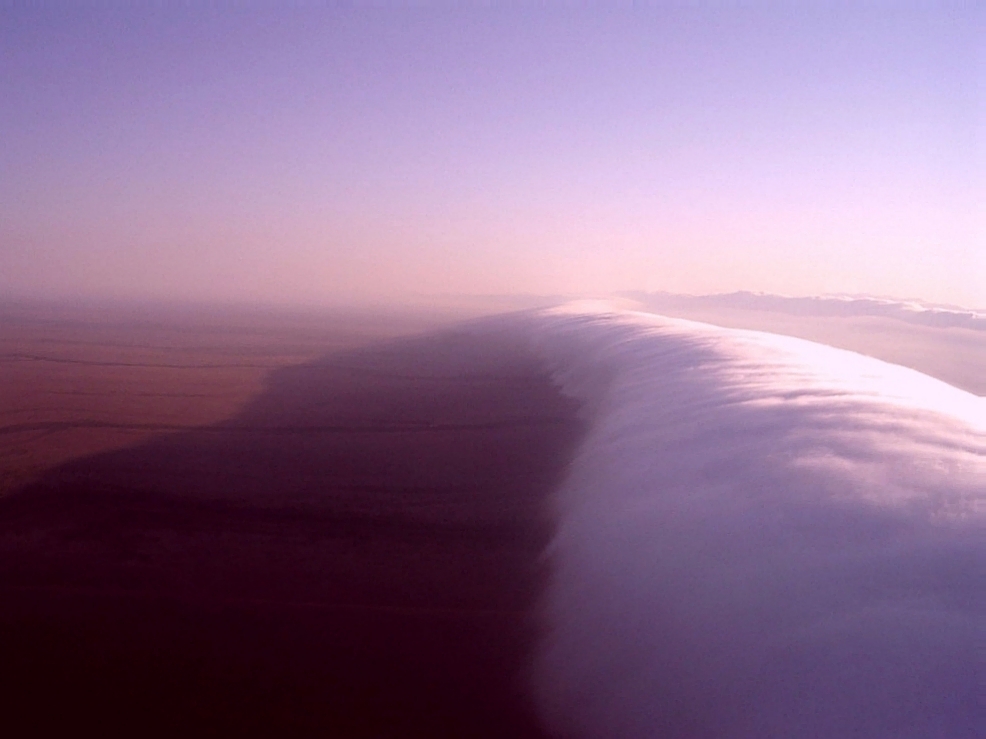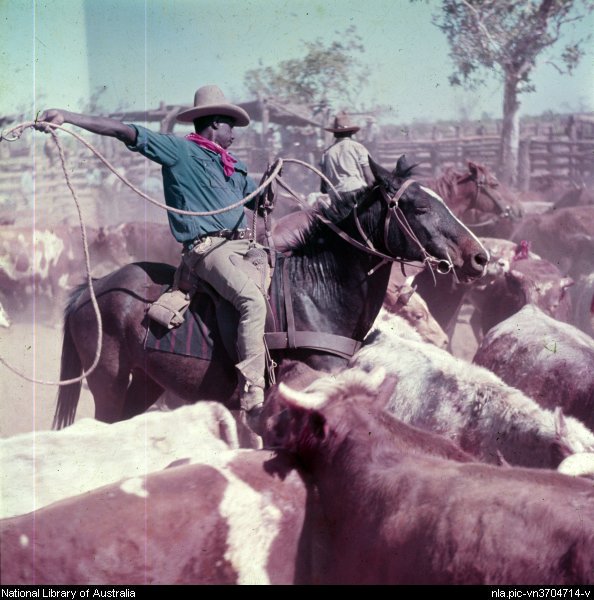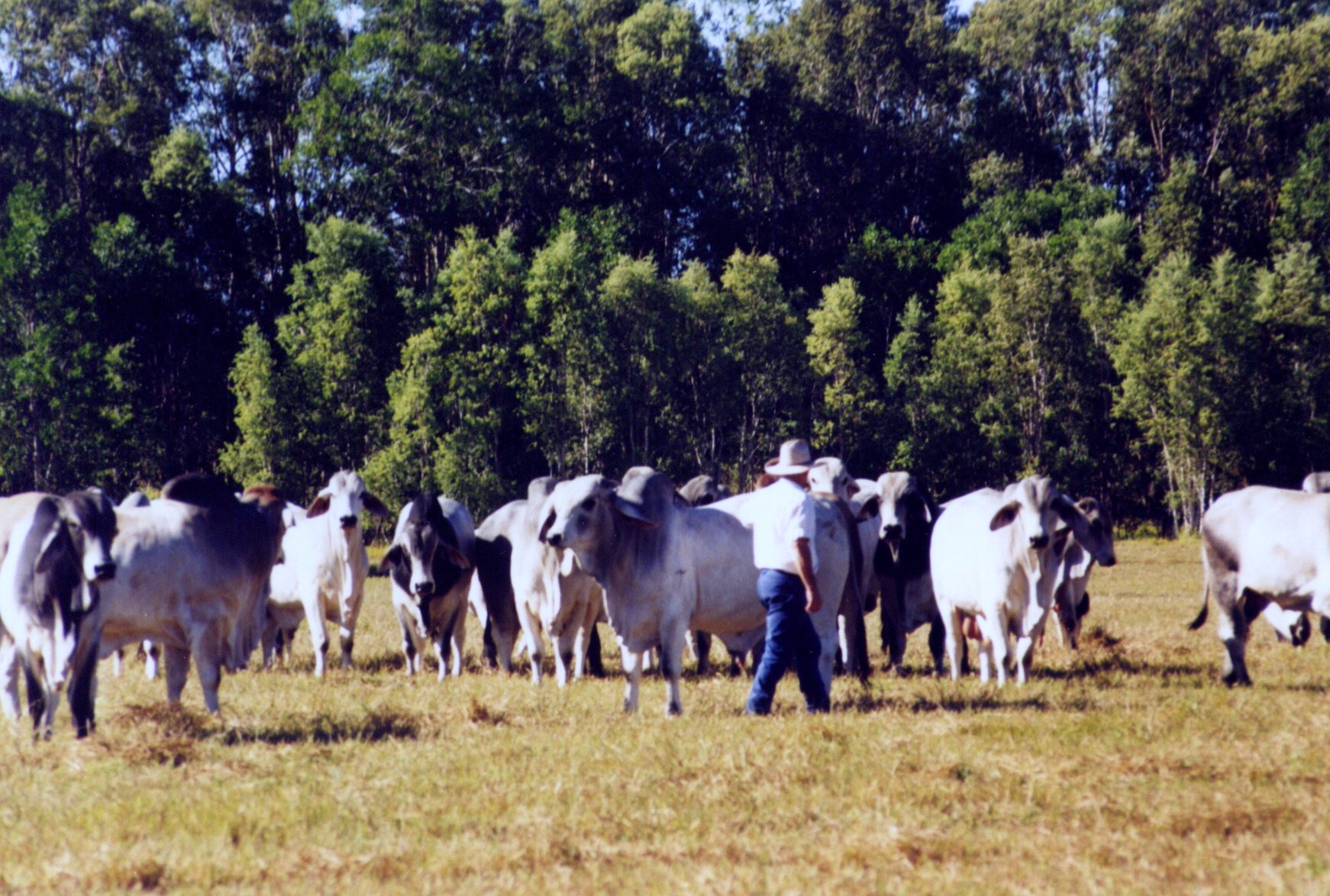|
Lardil People
The Lardil people, who prefer to be known as (meaning people of Kunhanhaa, the traditional name for Mornington Island), are an Aboriginal Australian people and the traditional custodians of Mornington Island in the Wellesley Islands chain in the Gulf of Carpentaria, Queensland. Language Lardil, now moribund, belongs to the Tangkic language family. The feature of kinship-sensitive pronominal prefixes had been ignored until they were discovered by Kenneth L. Hale in a study of Lardil. A special second language, Damin, thought of as a tongue created by the Yellow Trevally fish ancestor Kaltharr, and devised in part to mimic "fish talk", was taught during the second degree of initiation (''warama''). This initiation register of specialized Lardil has fascinated linguists: it contained in its phonemic repertoire two types of airstream initiation, a pulmonic ingressive and a labiovelar lingual egressive , unique among the world's languages. The secret language reinscribed ... [...More Info...] [...Related Items...] OR: [Wikipedia] [Google] [Baidu] |
Mornington Island
Mornington Island, also known as Kunhanhaa, is an island in the Gulf of Carpentaria in the Shire of Mornington, Queensland, Australia. It is the northernmost and, at , the largest of 22 islands that form the Wellesley Islands group. The largest town, Gununa, is in the south-western part of the island. The Lardil people are the traditional owners of the island, but there are also Kaiadilt people, who were relocated from nearby Bentinck Island, as well as people of other nations on the island. The Mornington Island Mission operated from 1914 until 1978, when it was taken over by the Queensland Government, which had proclaimed the islands an Aboriginal reserve in 1905. The Mirndiyan Gununa Aboriginal Corporation owns and manages an art centre, MIArt, and dance troupe, the Mornington Island Dancers. Geography The general topography of the island, which lies on the eastern (Queensland) side of the Gulf of Carpentaria, is flat with the maximum elevation of . The island is ... [...More Info...] [...Related Items...] OR: [Wikipedia] [Google] [Baidu] |
Ethnobotanical
Ethnobotany is an interdisciplinary field at the interface of natural and social sciences that studies the relationships between humans and plants. It focuses on traditional knowledge of how plants are used, managed, and perceived in human societies. Ethnobotany integrates knowledge from botany, anthropology, ecology, and chemistry to study plant-related customs across cultures. Researchers in this field document and analyze how different societies use local flora for various purposes, including medicine, food, religious use, intoxicants, building materials, fuels and clothing. Richard Evans Schultes, often referred to as the "father of ethnobotany", provided an early definition of the discipline: Since Schultes' time, ethnobotany has evolved from primarily documenting traditional plant knowledge to applying this information in modern contexts, particularly in pharmaceutical development. The field now addresses complex issues such as intellectual property rights and equitable ben ... [...More Info...] [...Related Items...] OR: [Wikipedia] [Google] [Baidu] |
Cattle Station
In Australia and New Zealand, a cattle station is a large farm ( station is equivalent to the American ranch), the main activity of which is the rearing of cattle. The owner of a cattle station is called a '' grazier''. The largest cattle station in the world is Anna Creek Station in South Australia, which covers an area of . Improvements Each station has a homestead where the property owner or the manager lives. Nearby cottages or staff quarters provide housing for the employees. Storage sheds and cattle yards are also sited near the homestead. Other structures depend on the size and location of the station. Isolated stations will have a mechanic's workshop, schoolroom, a small general store to supply essentials, and possibly an entertainment or bar area for the owners and staff. Water may be supplied from a river, bores or dams, in conjunction with rainwater tanks. Nowadays, if rural mains power is not connected, electricity is typically provided by a generator, although ... [...More Info...] [...Related Items...] OR: [Wikipedia] [Google] [Baidu] |
Burketown, Queensland
Burketown is an isolated outback town and coastal Suburbs and localities (Australia), locality in the Shire of Burke, Queensland, Australia. It is located west of Cairns and west of Normanton, Queensland, Normanton on the Albert River (Gulf Savannah), Albert River and Savannah Way in the area known as the Gulf Savannah. In the , the locality of Burketown had a population of 204 people. Geography Burketown is located on the Albert River (Gulf Savannah), Albert River to the north west of the state capital, Brisbane, with the nearest larger town being Normanton, Queensland, Normanton, to the east, and the nearest city being Mount Isa, to the south. The town is roughly inland from the Gulf of Carpentaria. It is located west of Cairns via the Savannah Way passing through the area known as the Gulf Savannah. The town is the administrative centre of the Burke Shire Council. History Aboriginal history Aboriginal Australian peoples had inhabited the region for millennia be ... [...More Info...] [...Related Items...] OR: [Wikipedia] [Google] [Baidu] |
Drover (Australian)
A drover in Australia is a person, typically an experienced stockman, who moves livestock, usually sheep, cattle, and horses "on the hoof" over long distances. Reasons for droving may include: delivering animals to a new owner's property, taking animals to market, or moving animals during a drought in search of better feed and/or water or in search of a yard to work on the livestock. The drovers who covered very long distances to open up new country were known as " overlanders". Method Moving a small mob of quiet cattle is relatively easy, but moving several hundreds or thousands head of wild station cattle over long distances is a very different matter. Long-distance moving large mobs of stock was traditionally carried out by contract drovers. A drover had to be independent and tough, an excellent horseman, able to manage stock as well as men. The boss drover who had a plant (horses, dogs, cooking gear and other requisites) contracted to move the mob at a predetermined rat ... [...More Info...] [...Related Items...] OR: [Wikipedia] [Google] [Baidu] |
Holothuroidea
Sea cucumbers are echinoderms from the class Holothuroidea ( ). They are benthic marine animals found on the sea floor worldwide, and the number of known holothuroid species worldwide is about 1,786, with the greatest number being in the Asia–Pacific region. Sea cucumbers serve a useful role in the marine ecosystem as detritivores who help recycle nutrients, breaking down detritus and other organic matter, after which microbes can continue the decomposition process. Sea cucumbers have a leathery skin and an elongated body containing a single, branched gonad, are named for their overall resemblance to the fruit of the cucumber plant. Like all echinoderms, sea cucumbers have a calcified dermal endoskeleton, which is usually reduced to isolated microscopic ossicles (or sclerietes) joined by connective tissue. In some species these can sometimes be enlarged to flattened plates, forming an armoured cuticle. In some abyssal or pelagic species such as '' Pelagothuria natatrix'' ... [...More Info...] [...Related Items...] OR: [Wikipedia] [Google] [Baidu] |
Ketch
A ketch is a two- masted sailboat whose mainmast is taller than the mizzen mast (or aft-mast), and whose mizzen mast is stepped forward of the rudder post. The mizzen mast stepped forward of the rudder post is what distinguishes the ketch from a yawl, which has its mizzen mast stepped aft of its rudder post. In the 19th and 20th centuries, ketch rigs were often employed on larger yachts and working watercraft, but ketches are also used as smaller working watercraft as short as 15 feet, or as small cruising boats, such as Bill Hanna's Tahiti ketches or L. Francis Herreshoff's Rozinante and H-28. History The name ketch is derived from ''catch''. The ketch's main mast is usually stepped further forward than the position found on a sloop. The sail plan of a ketch is similar to that of a yawl, on which the mizzen mast is smaller and set further back. There are versions of the ketch rig that only have a mainsail and a mizzen, in which case they are referred to as ''cat ketch' ... [...More Info...] [...Related Items...] OR: [Wikipedia] [Google] [Baidu] |
Mornington Island Mission
Mornington Island, also known as Kunhanhaa, is an island in the Gulf of Carpentaria in the Shire of Mornington (Queensland), Shire of Mornington, Queensland, Australia. It is the northernmost and, at , the largest of 22 islands that form the Wellesley Islands group. The largest town, Gununa, Queensland, Gununa, is in the south-western part of the island. The Lardil people are the traditional owners of the island, but there are also Kaiadilt people, who were relocated from nearby Bentinck_Island,_Queensland, Bentinck Island, as well as people of other nations on the island. The Mornington Island Mission operated from 1914 until 1978, when it was taken over by the Queensland Government, which had proclaimed the islands an Aboriginal reserve in 1905. The Mirndiyan Gununa Aboriginal Corporation owns and manages an art centre, MIArt, and dance troupe, the Mornington Island Dancers. Geography The general topography of the island, which lies on the eastern (Queensland) side of the ... [...More Info...] [...Related Items...] OR: [Wikipedia] [Google] [Baidu] |
Presbyterian
Presbyterianism is a historically Reformed Protestant tradition named for its form of church government by representative assemblies of elders, known as "presbyters". Though other Reformed churches are structurally similar, the word ''Presbyterian'' is applied to churches that trace their roots to the Church of Scotland or to English Dissenter groups that were formed during the English Civil War, 1642 to 1651. Presbyterian theology typically emphasises the sovereignty of God, the authority of the Scriptures, and the necessity of grace through faith in Christ. Scotland ensured Presbyterian church government in the 1707 Acts of Union, which created the Kingdom of Great Britain. In fact, most Presbyterians in England have a Scottish connection. The Presbyterian denomination was also taken to North America, Australia, and New Zealand, mostly by Scots and Scots-Irish immigrants. Scotland's Presbyterian denominations hold to the Reformed theology of John Calvin and his ... [...More Info...] [...Related Items...] OR: [Wikipedia] [Google] [Baidu] |
Aboriginal Reserve
An Aboriginal reserve, also called simply reserve, was a government-sanctioned settlement for Aboriginal Australians, created under various state and federal legislation. Along with missions and other institutions, they were used from the 19th century to the 1960s to keep Aboriginal people separate from the white Australian population. The governments passed laws related to such reserves that gave them much power over all aspects of Aboriginal people’s lives. Protectors of Aborigines and (later) Aboriginal Protection Boards were appointed to look after the interests of the Aboriginal people. History Aboriginal reserves were used from the nineteenth century to keep Aboriginal people separate from the white Australian population, often ostensibly for their protection. Protectors of Aborigines had been appointed from as early as 1836 in South Australia (with Matthew Moorhouse as the first permanent appointment as Chief Protector in 1839). The Governor proclaimed that Aborig ... [...More Info...] [...Related Items...] OR: [Wikipedia] [Google] [Baidu] |
Sweers Island
Sweers Island is an island in the South Wellesley Islands in the Gulf of Carpentaria, Queensland, Australia. Most of the island is Aboriginal Freehold Land, held in trust by the Kaiadilt Aboriginal Land Trust (KALT) on behalf of the traditional owners. There is a small private resortSweers Island Resortowned via a perpetual lease on Crown Land, being the site of a township dating from the 1800s, with the only residents being the owners and workers at the resort. Sweers Island was the location of "The Investigator Tree" which is now in Queensland Museum. History Kayardild (also known as Kaiadilt and Gayadilta) is a language of the Gulf of Carpentaria, once spoken by the Kaiadilt people. The Kayardild language region includes the landscape within the local government boundaries of the Mornington Shire Council. The island was given its European name by explorer Matthew Flinders on 16 November 1802 after Salomon Sweers, a council member of the East India Company at Batavi ... [...More Info...] [...Related Items...] OR: [Wikipedia] [Google] [Baidu] |
Stockman (Australia)
In Australia, a stockman (plural stockmen) is a person who looks after the livestock on a station, traditionally on horse. It has a similar meaning to "cowboy". A stockman may also be employed at an abattoir, feedlot, on a livestock export ship, or with a stock and station agency. Country music singer-songwriter, Slim Dusty, sang about The Ringer from the Top End. Associated terms Stockmen who work with the cattle in the Top End are known as ringers and are often only employed for the dry season which lasts from April to October. A station hand is an employee who is involved in routine duties on a rural property or station, which may also involve caring for livestock. With pastoral properties facing dire recruitment problems as young men are lured into the booming mining industry, young women from the cities are becoming a common sight on outback stations, often attracted by the chance to work with horses. An associated occupation is that of the drover, who, like the s ... [...More Info...] [...Related Items...] OR: [Wikipedia] [Google] [Baidu] |









